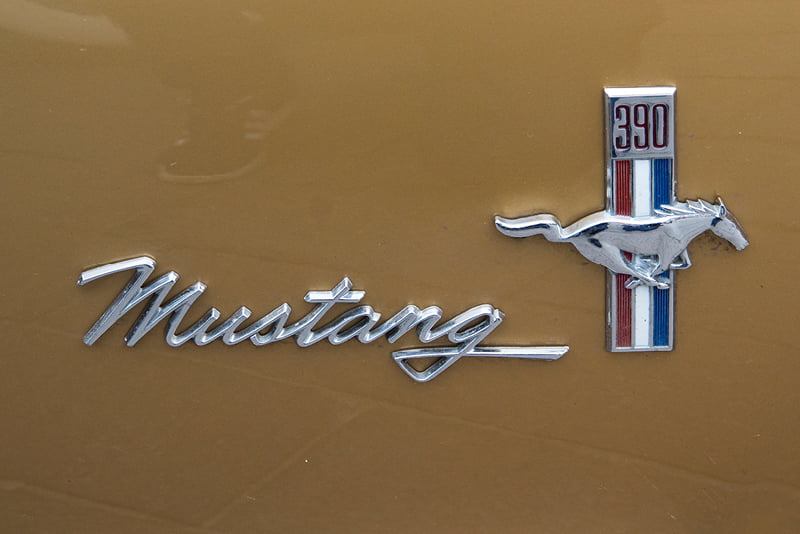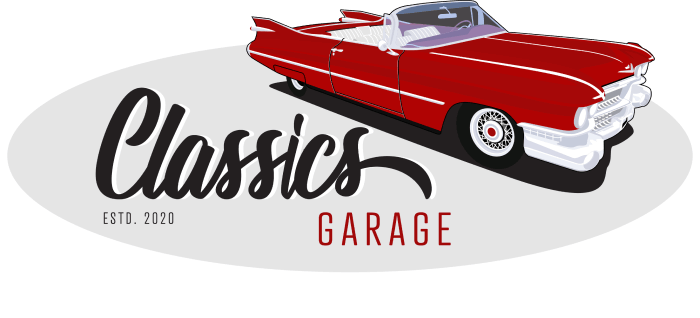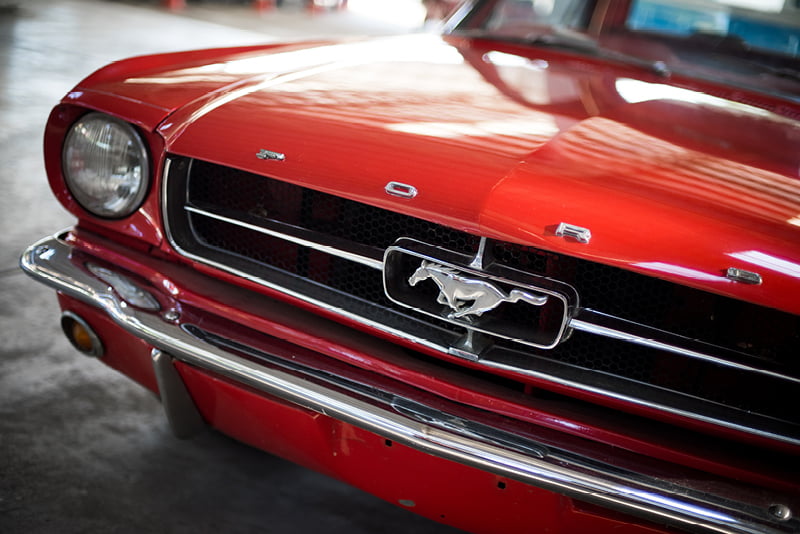The iconic Ford Mustang badge found on every model represents a nod to another American icon – a feral horse small of build, but fast and full of character.
In continuous production since 1964, the Ford Mustang is currently the longest-produced car nameplate manufactured by the Ford Motor Company. The namesake of the “pony car” automobile segment, the Mustang was initially developed as a highly styled line of sporty coupes and convertibles derived from existing model lines, initially distinguished by “long hood, short deck” proportion, it spawned Ford’s competitors to release their own similar models as a means to keep up.
 As the godfather of all pony cars – the term used to describe a relatively lightweight two-door body with a small block V8 engine – the Ford Mustang paved the way for competitors such as the Chevrolet Camaro and Dodge Challenger. The American public wanted fast cars without sacrificing comfort, while still being somewhat affordable to the average buyer. While the humble Mustang is memorable for a wide variety of reasons, even people who know little to nothing about cars are usually familiar with its all but quintessential badge and logo.
As the godfather of all pony cars – the term used to describe a relatively lightweight two-door body with a small block V8 engine – the Ford Mustang paved the way for competitors such as the Chevrolet Camaro and Dodge Challenger. The American public wanted fast cars without sacrificing comfort, while still being somewhat affordable to the average buyer. While the humble Mustang is memorable for a wide variety of reasons, even people who know little to nothing about cars are usually familiar with its all but quintessential badge and logo.
How The Iconic Mustang Badge Came To Life
Although more than nine million Ford Mustangs have been sold globally since it was first released in 1964, the marketing and following popularity of this stallion could have turned out very differently considering that other names in the mix were Avanti, Allegro, Torino and even Cougar – doesn’t have quite the same ring to it, does it?
For the unfamiliar, the badge seen on every Ford Mustang is a pony galloping across its grille. Before it’s release in the mid sixties, the design team at Ford were determined to tap into the renewed patriotism of the American youth. As a free roaming and wild animal found across the Western parts of the United States, the symbolism that the mustang represented was that of a formerly domesticated horse that had managed to break free. Evidentially, this message was something that appeared to speak to the red blooded American men that Ford was aiming to pitch to.
The galloping horse that many of us now recognise as the Ford Mustang badge and logo was originally brought to life by Ford designer Phil Clark in 1962. However, the first draft wasn’t the standalone pony, but also included red, white and blue bars behind, signalling the marque’s American heritage. After undergoing several tweaks to ensure the message was right and that the logo could comfortably fit in the car’s grille, the final release had the horse in a sprinting position with its tail out horizontally – although there was even considerable debate as to which direction the horse should be sprinting towards.
Ford account executive Frank Thomas worked on the name research, and has since been quoted as saying that Mustang rose to the top “because it had the excitement of the wide open spaces and was American as all hell.” Although no concrete evidence can be found, numerous anecdotes have been told that the left-facing pony represents a horse running west corresponding to that direction on a typical map.
![]() Although the iconic badge has received several minor adjustments over the years in line with the car design itself, there’s no denying that it was one of the best marketing moves in American automotive history – after all, we’re still talking about it today.
Although the iconic badge has received several minor adjustments over the years in line with the car design itself, there’s no denying that it was one of the best marketing moves in American automotive history – after all, we’re still talking about it today.
Getting Your Hands On A Classic Car
Meeting a fellow vintage auto enthusiast can feel a bit like finding a needle in a haystack, but rest assured that Classic’s Garage understands the thrill more than most. Having spent forty years collecting anything and everything from matchbox cars to hub caps, he’s successfully followed his passion to source, collect and stock beautiful and low mileage classic automobiles from around the world. With extensive experience in the automotive industry, it was only a matter of time before Wayne expanded on his love of vintage, iconic vehicles to share his knowledge and passion with the public.
Although his passion is for automobiles built before 1978, with a particular love for Buicks, Cadillacs, Lincolns, Oldsmobiles and even Fords, Wayne is just as passionate about the stories of the owners. Just like the cars, he has found that his fellow classic car enthusiasts all have wildly different attractions and logic behind their passion or hobby, and this often translates into how the car is presented. If it’s even remotely different, rare or just plain unusual, Wayne will overcome the relevant logistical and geographical challenges of bringing the cars to his showroom in Australia.
Classic’s Garage is a showroom conveniently located at Seventeen Mile Rocks, that specialises in the restoration and sales of vintage automobiles. In fact, he’s got a medley of fully restored models in stock right now, which can be viewed online via Wayne’s Collection. If you’re on the hunt for Brisbane classic cars – quite simply, Wayne is your man. If you would like to arrange a viewing or inspect any other of our classic vehicles, please get in touch with us today.

